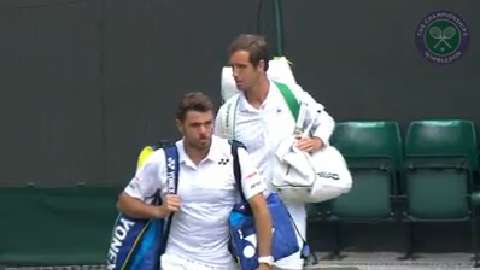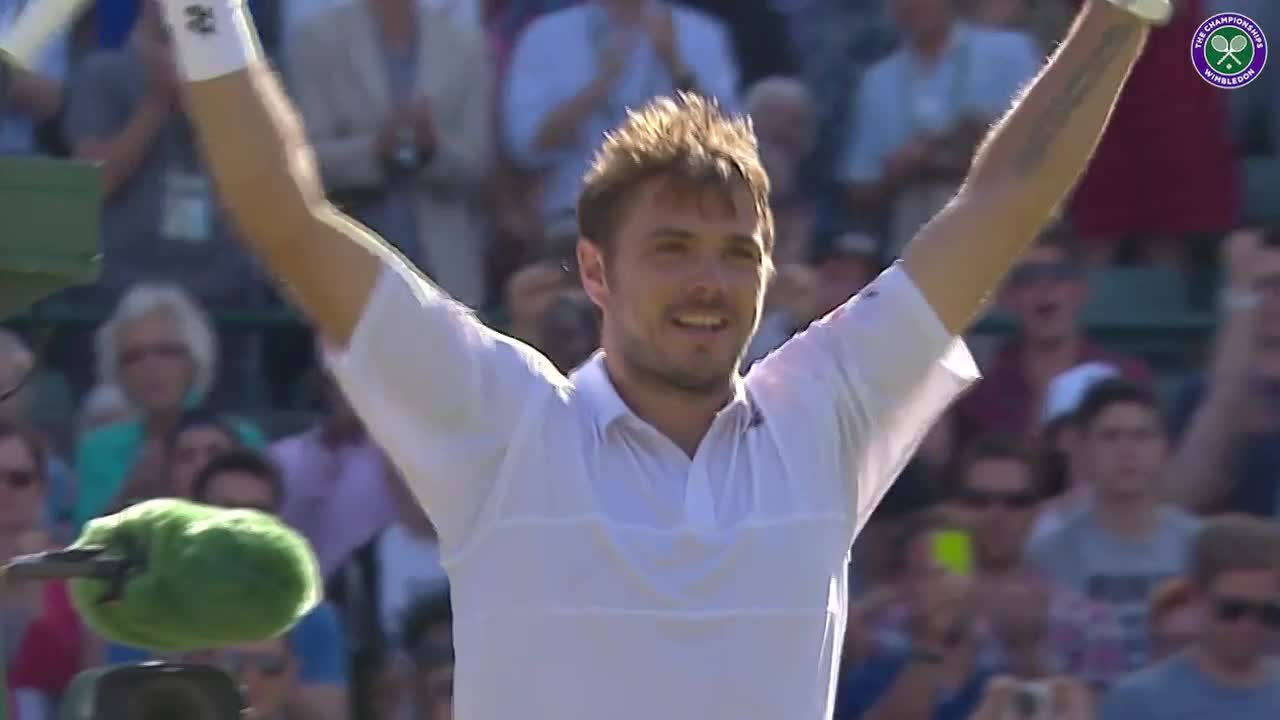When Stan Wawrinka overcame the first-set deficit to take the next two in his quarter-final against Richard Gasquet, many voices around the All England Club were heard to say: “So it’s going to be the top four seeds filling the men’s semi-final places.”
And had it happened, it would have been the first time in two decades.
But it didn’t. It was the Frenchman who delivered the points for victory, not Wawrinka. Courtside on No.1, spectators could scarcely believe it. At the end of the third set, the Swiss could hardly have looked more comfortable. And late in the fifth he had a break point. And yet somehow he emerged from the shot-making extravaganza as the loser.
Victory would have earned him what the seedings dictated was his rightful place in the semi-finals, cementing – in the new world order, post Roland Garros – his berth in the changing cast of the Big Four. And had he made it, he would have faced Novak Djokovic again, just 33 days after denying the Serb his career Grand Slam in that shock result from the Paris final.
Now that would have been the kind of match Wawrinka would have relished – once again the outsider, with nothing to prove as both the surface and Djokovic’s history here would have favoured the No.1 seed. Who knows what effect seeing Wawrinka on the opposite side of the net so soon after Paris would have had on Djokovic? We shall never know, as the Swiss never got there.

But perhaps his disappointment is not so great. He certainly gives every appearance of being utterly uninterested in the question of his new membership among the Big Four. Besides, at Wimbledon 2015 he equalled his quarter-final of last year, so defended his ranking points. And ahead lies the North America hard court swing, where his season promises much. Many see him as offering a key threat at the US Open, where he has two quarters and a semi to his name from previous campaigns.
He’s an intriguing figure to the tennis-watching public – still quite a mystery character to the many whose prime tennis viewing comes understandably during the Grand Slams, and thus have come late to Wawrinka thanks to his greatest achievements coming comparatively late on. In Paris a key talking point was his garb, specifically the deafening pink-checked shorts, which Wimbledon’s all-white rule rendered unwearable here; but as they became an instant signature for him, surely the chaps in marketing will see to their reappearance.
In any case, on his arrival at his victory press conference, Wawrinka grinned and draped the aforementioned shorts over the desk in front of him with a flourish, as if they were a flag of allegiance. It was a good moment for him, as his public persona can appear a little opaque.
Like most regular people, he does not possess super-relaxed natural ease in front of a microphone. (Long ago the legendary British sportswriter Ian Wooldridge wrote a particularly noteworthy feature about those sportsmen and women with the useful facility of appearing charming in front of a camera, and how this should not be mistaken as a reliable indicator that those individuals are in any way charming in real life. Always a handy thought to bear in mind.)
But there is no doubt that he is the real deal on a tennis court. John McEnroe describes Wawrinka’s backhand as the greatest shot he has ever seen – and, for the avoidance of doubt, it is worth clarifying that the three-time Wimbledon champion is not saying it is the greatest backhand he has seen, but the greatest shot of any kind, played by anyone, ever. Now there’s a thing.
Can that backhand propel him to a third late-career Slam in New York? It's a tantalising thought. Time will tell.









































